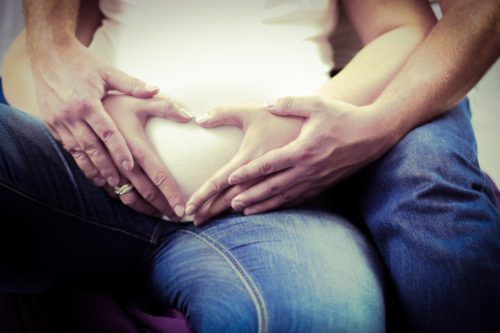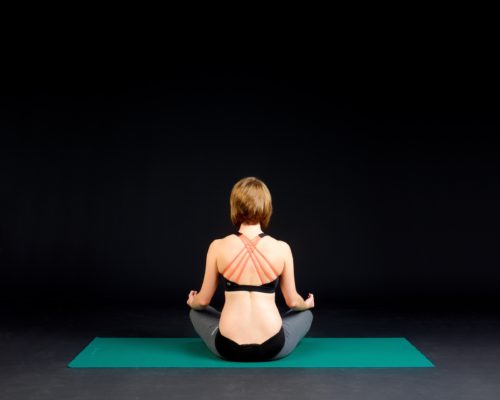Getting Started
The first six weeks are a precious but often fraught time, adapting to becoming a mum for the first time, or trying to juggle other children as well. In these early days it is worth just trying to get out when you can with the buggy, to walk and get fresh air, and not push yourself into anything more. I would advise this whether you have had a normal delivery, a caesarean section or an instrumental delivery.

Benefits

One of the most important questions we as GP’s ask women during their 6-week post-natal check is about their mood. Post-natal depression is common. I am not going to pretend that exercise can prevent it completely, but a recent study showed that women who are active and enjoy exercise can reduce their risk of post-natal depression. It is well known that exercise increases natural levels of endorphins and serotonin. These hormones promote wellbeing and reduce the risk of depression.
Many new mums will struggle with the changes in their body which happened during pregnancy. Exercise in any form will not necessarily result in your body going back to its pre-pregnancy state, but it will go some way to helping! The presence of relaxin which I mentioned previously means the pelvic girdle is going to be naturally wider than before carrying a baby. Gradually this will come together in time, but it may take months to see any difference regardless of what exercise you do. If you are breast feeding, then your body holds on to fat so that you can adequately meet your baby’s demands. I guess what I am saying is that your body will be different for a while and that’s ok! But exercise will help you to feel better about yourself if you can find a way to fit it in to your life.

Common Problems

Around 8 to 12 weeks after giving birth the rectus sheath (the part of your abdomen that holds your stomach muscles together) will in most women have almost knitted back together. If you are concerned that you still have a gap in these muscles and it is significant, then mention it to your GP. They will be able to assess whether a referral to a specialised physiotherapist would be useful to show you some exercises to help correct the defect. In some rare cases women may need surgical correction; it is therefore important that women shouldn’t be afraid of discussing this with their doctor.
These are remarkably common, especially in women who have had more than one baby, or an instrumental delivery. The longer you breastfeed for, the higher the relaxin levels stay for longer, and therefore pelvic floor problems like a prolapse will take longer to resolve. I cannot emphasise enough how important doing pelvic floor exercises are at preventing post-natal problems, and how good they are at correcting them. These problems can result in women being embarrassed to risk exercising, worried about their body letting them down in various ways. Again, I would encourage any woman who is worried about this to let their GP know. Most GP’s will have access to physiotherapists who are specialists in gynaecological issues and women should be offered referral to them if they have ongoing concerns. If you are not offered a referral but feel you need one – then ask!


Other Medical Problems
There are many other medical problems that can be exposed during pregnancy and the post-natal period. High blood pressure, anaemia, thyroid abnormalities, diabetes and joint problems are all common. Make sure you chat to your doctor if you have had any of these problems before you start to exercise.
Breastfeeding
My Story
As a first-time mum exercise was right at the bottom of my priorities. The first six weeks were purely about getting through each day (and night). But even through those tough early few weeks, I knew that being able to get out with the buggy for a walk was so important.
Running didn’t become a regular part of my life until our youngest daughter was around 13 months old. By this point I was ready to escape the chaos of the house and started very gentle running only 4km at first (stopping numerous times), just once a week. I am very lucky to have a supportive husband who recognised that I needed space from the bath/bedtime routine once a week and that was when I went out with a group of other women of varying running experience. The support of them enabled me to very gradually build up to a half marathon when Rosie was 18 months old. At the point I started running I was still breastfeeding and conscious of the risk of injury, so going slowly and building up very gradually was key to enabling me to manage a half marathon. I know that my body now feels stronger than it did before I had children. I am sure that it is a combination of mental strength and new found physical strength that I didn’t realise existed before.
I couldn’t write a blog about post-natal exercise without mentioning some women who have done extraordinary things in the world of athletics after becoming mums. In 1991, Liz McColgan won the 10000m in the World Athletics Championships only 9 months after having her first daughter Eilish. In 2013, Jo Pavey won the 10000m in the European Championships only 10 months after giving birth to her second child; she had also just turned 41. In 2015, Jessica Ennis-Hill won the World Heptathalon Championship 13 months after having her first child.
I know that when I am running and particularly during a race I think about my girls and knowing they are watching gives me more motivation and an inner strength. Paula Radcliffe has talked about saying her eldest daughter’s name over and over again in the final stages of the London Marathon, and how this helped her to keep going. I mention these women purely as encouragement that exercising after you have a baby is possible whether you are just trying to achieve a Parkrun or a Marathon, or something far more!
Dr Jenna Middleton
